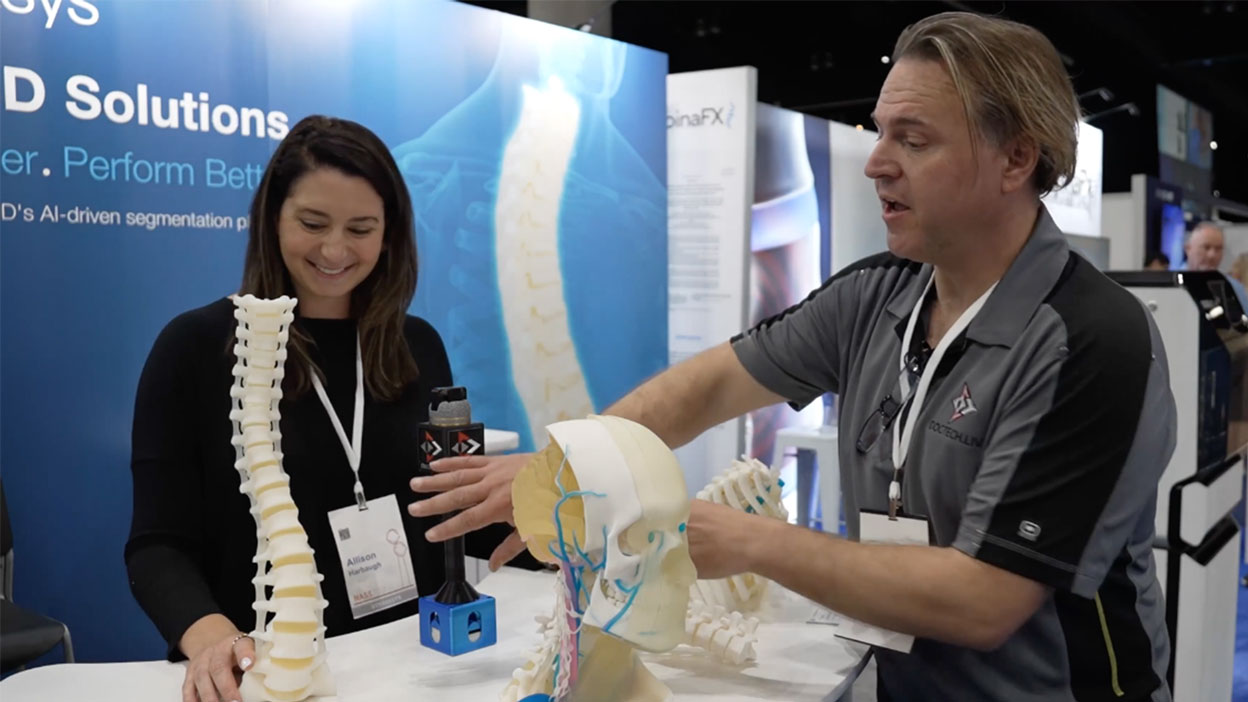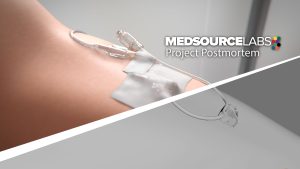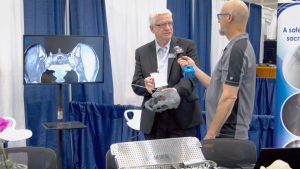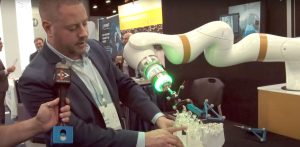In the ever-evolving world of medical technology, innovations continue to shape the landscape of healthcare and surgery. At the North American Spine Society (NASS) 2023 conference, Doctech.live had the opportunity to interview Allison Harbaugh, a medical business manager at Stratasys, a company that has been recognized by CNN as one of the most influential companies in the 3D printing space. This interview shed light on Stratasys’ groundbreaking contributions to the medical field, specifically in the realm of 3D Printing in healthcare. Let’s delve into the conversation and discover how Stratasys is transforming pre-surgical planning and patient care.
Stratasys: Pioneering 3D Printing in Medicine
Stratasys, with its extensive range of additive technologies and materials, is tackling critical manufacturing challenges. From rapid prototyping to the serial production of end-use parts, Stratasys is at the forefront of 3D printing technology. They offer industrial-grade 3D printers, a wide portfolio of polymer 3D printing materials, and intuitive GrabCAD Print software, making them a leading force in the industry.
3D Printing’s Promise in Healthcare
The promise of 3D printing in healthcare is undeniable. It offers scalable, local, and on-demand production of parts, making manufacturing more sustainable, affordable, and efficient. Stratasys’ mission is to lead the industry towards smarter and better manufacturing by supporting their research and development teams. They aim to have a positive impact by strengthening revenue, cutting costs, providing convenient and affordable products, and promoting sustainability.

Unlocking the Potential of 3D Printing
Allison Harbaugh of Stratasys discussed the company’s role in the medical device industry and its use in converting DICOM data into 3D printable models. The interview revealed several key benefits for patients and healthcare professionals.
Patient-Specific 3D Models
Surgeons can transform patient CT and MR data into physical 3D models, which aid in pre-surgical planning and help patients better understand their procedures.
Realistic Practice
Stratasys’ latest J850™ Digital Anatomy™ 3D Printer offers materials that mimic bone and tissue properties, allowing surgeons to practice surgeries beforehand.
Customization
Unlike generic files or off-the-shelf solutions, Stratasys’ technology allows for patient-specific models.
Enhanced Education
Healthcare professionals can better educate themselves and understand surgical procedures by working with these patient-specific models.
Making 3D Printing Accessible
One of the remarkable aspects of Stratasys’ technology is its accessibility. Setting up their systems requires only a standard outlet and space to accommodate the equipment. Radiology departments are typically the ideal location for these machines due to their proximity to patient data sets. Additionally, anyone with the right training can operate the printer.
Addressing Challenges
One challenge in utilizing 3D printing for surgical planning is converting patient DICOM data into 3D printable files. Stratasys has partnered with companies like Axial 3D to offer conversion services, ensuring a smooth transition for hospitals without in-house segmentation capabilities.
Advantages Over Competitors
Stratasys stands out from competitors by allowing the mixing of different colors and textures in a single 3D printed model. This eliminates the need for gluing parts together and ensures a seamless, high-quality result. Stratasys’ technology simplifies the process, producing models that are ready to use straight out of the printer.
Conclusion
Stratasys, as showcased in the interview with Allison Harbaugh, is driving innovation in healthcare through 3D printing. Their patient-specific 3D models are revolutionizing pre-surgical planning, enabling surgeons to practice on realistic models, and enhancing patient education. As we continue to witness advancements in medical technology, Stratasys stands as a testament to the transformative power of 3D printing in medicine.












